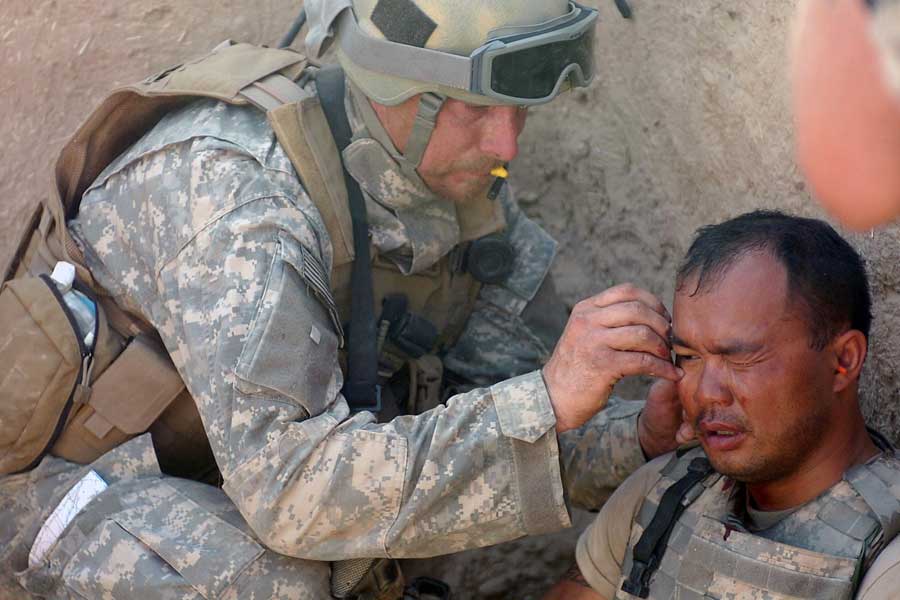
Soldiers, do YOU wear ballistic EyePro or is it one of those items of military kit that you are either not issued or cannot be bothered to carry?
~
When we started JOINT-FORCES.com back in March 2018 EyePro, ballistic eye protection, had been in fashion for around a decade or so with most Allied armies as a result of operational experience from the Iraq and Afghanistan campaigns, so we presumed a dedicated Eyewear section would be needed as much as the Footwear, Rations or Kit & Camo sections. It was only when I was adding tags to Mike Gormley’s latest eyewear review today (see Salice 026 RW Interchangeable Lens Sunglasses) that the penny dropped we have not actually added any EyePro articles for over four years!

I then looked back through our library of images of British troops taken in the field over the last few years on both training exercises and operational deployments, as well as through publicly accessible UK MoD defence imagery archives and realised that since the end of Operations TELIC and HERRICK, with the exception of the Operation NEWCOMBE deployment in Mali, the wearing of eyepro again appears to be unfashionable. This really is rather stupid, as a soldier’s eyes are not only the most fragile and vulnerable part of the body, but sight is often the most necessary of all the senses if one is to survive on the battlefield. Back in 2009 I penned the following article which is possibly now worth another outing, albeit slightly reworked and updated for 2022:-
¤ When I was in my teens I had a romantic dream of joining the Royal Air Force and seeing the world. I suppose I could have joined the Commandos, but the tale that a close family friend told of stepping off a landing craft into neck deep water on D-Day and then seeing his mates die around him as that tough and wiry little Glaswegian struggled ashore under fire, was a bit off-putting. My father served as a sailor in the Far East during the WWII, but as he did not talk of his exploits and as I have never been much of a swimmer the Navy held no real appeal. However, as an avid reader from boyhood, the memoirs of Douglas Bader, Bob Stanford-Tuck and their Battle of Britain colleagues had given me a glamorous perception of the RAF, so when my best mate suggested it really was about time for us to knuckle down, find adventurous jobs and see the world, it was to the RAF Careers Office in our native Glasgow that we headed.
To cut a long story short, my hoped for career in the RAF petered out shortly after my first in-depth sight test, when it was discovered that my vision in one eye was actually below par. A few months before, while on an engineering workshop course, a freak accident had seen a tiny sliver of hot metal chipped from a weld enter my eye. I had been wearing the right safety gear, and indeed my training school instructor was standing alongside me at the time so I had no option but to do so, yet a tiny little red hot sliver of metal had still found the one path through to my eye.
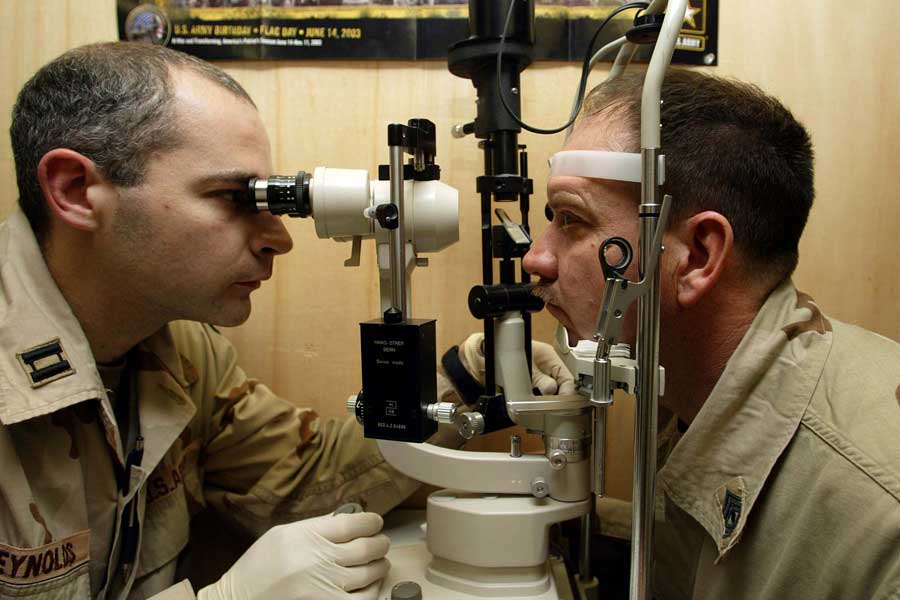
A quick trip by ambulance to the local eye infirmary resulted and the surgeon deftly removed the offending item, seemingly without it having caused major damage, but over the next few months things started to go wrong. It would be some time before the deterioration in my eyesight was so bad that I had to start permanently wearing spectacles, but unfortunately for me the RAF doctor who examined my eyes spotted the signs of future problems and put the block on my dreams of seeing the world as an RAF officer. Oh, and as for my mate, he was rejected right at the start because he had flat feet so he ended up working with newfangled computers instead!
Battlefield Protection: Every few days, or so it seemed, battlefield fatalities in Afghanistan hit the news back in 2009, but it was seldom publicised that for every soldier killed in action several others were taken off the battlefield with life-threatening or life-changing injuries. Incredibly, on average around one in six of those injured on the battlefield suffer eye injuries, frequently so severe in nature that the soldier cannot return to frontline duties, yet mostly these could be prevented by the wearing of relatively inexpensive spectacles or goggles.
In December 2008 both the UK Ministry of Defence and the US Marine Corps Systems Command announced they were seeking suppliers of ballistic protective spectacles and goggles for issue to troops deploying on combat operations. In addition to ballistic fragmentation protection that met or exceeded latest safety standards, the Leathernecks stated that they were specifically interested in eyewear which provided protection from harmful UV rays, with particular emphasis on UV B wavelength.
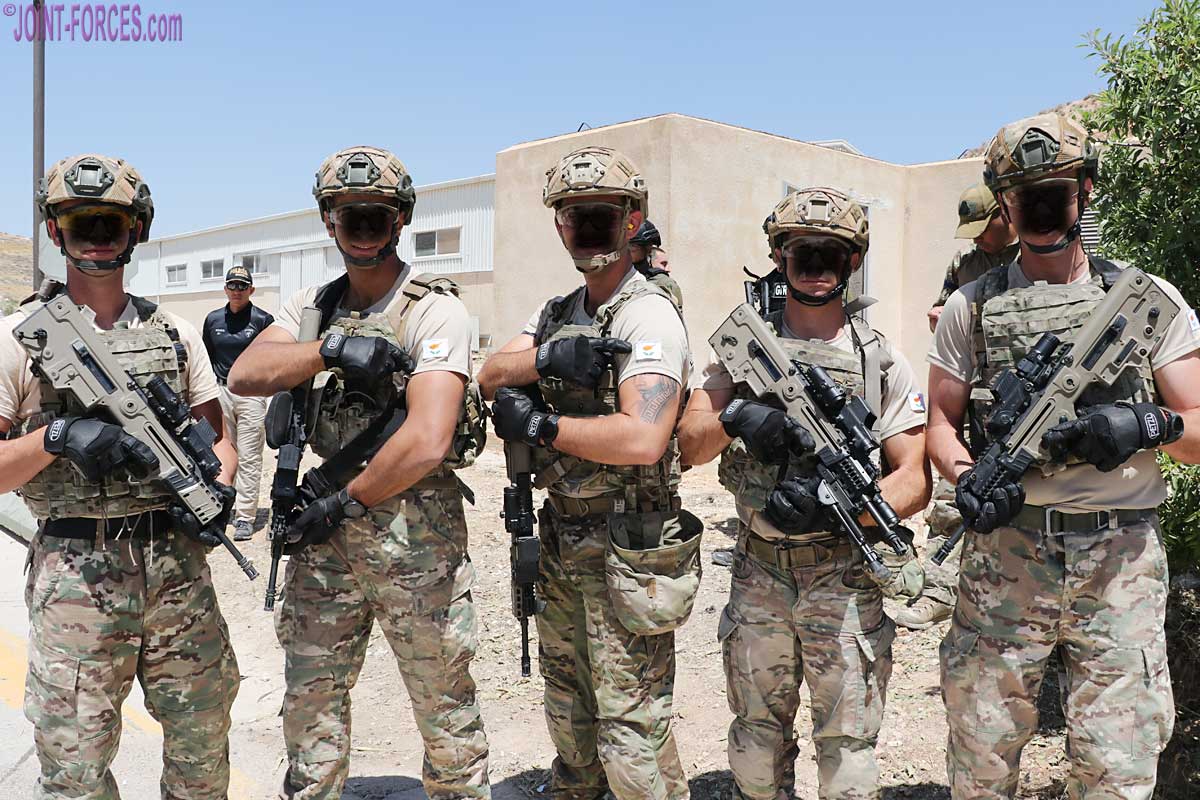
[© Bob Morrison]
The British military were originally less stringent with their requirements, though in early January 2009 they did release revised specifications which called for higher protection levels. However, at the last moment the tender request was cancelled and as a result higher specification protective eyewear was put on hold until the, subsequently cancelled, PECOC (Personal Equipment and Common Operational Clothing) programme was due to be introduced a couple of years down the line. Then in mid-January 2011 it was formally announced that UK MoD was making an interim purchase of combat protective eyewear from Revision Military, covering a six month requirement for current operational and training needs (i.e. an Urgent Operational Requirement) plus an option for a further six month quantity was also indicated to tide UK MoD over until the re-run of a major tender to supply ballistic eyeshields and goggles for a five year period.
Advances in ballistic body armour and helmet protection since the 1991 Gulf War had seen survival rates for dismounted soldiers increase, though of course the use of large improvised explosive devices (IEDs) and suicide bombs against soldiers on foot patrol, first in Iraq and then in Afghanistan, increased dramatically as the enemy tried to counter this trend. Against bullet, grenade fragments and mortar shrapnel, however, the soldier on the battlefield was relatively well protected in his or her more vulnerable regions… except for the eyes.
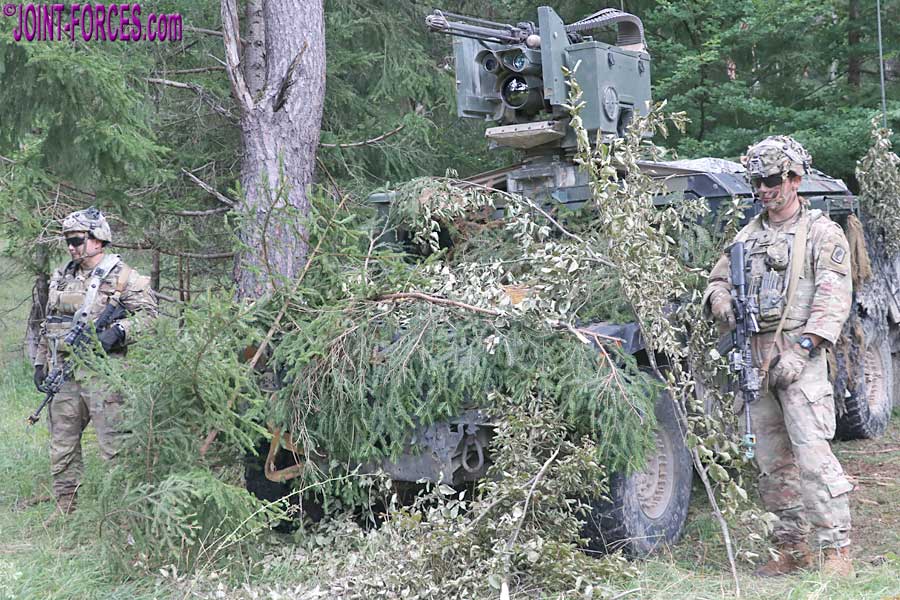
When struck on helmet or body armour a soldier is usually not taken out of the battle and even when hit in the limbs by bullet or shrapnel it is still possible to fight on to protect one’s life, but even the tiniest of slivers penetrating the eyes can leave the fittest, toughest and most determined hardened infantry combat veteran totally defenceless. For under a hundred dollars, as one supplier of North American protective eyewear pointed out while the US Marines were looking at introducing eyepro, chances were that the soldier under attack would not only be able to fight out the current engagement but would live out the rest of his life with unimpaired eyesight.
With the exception of Mike, who has less need to wear eyepro, our little team has been around long enough to appreciate the value of our eyes, especially as we are all photographers as well as writers, so we invariably carry – and use – protective eyewear when covering troops on exercise or deployment. In fact as I penned the original of this article I had only just returned from working with the Royal Marines and the Princess of Wales’s Royal Regiment in Cyprus and Carl was on his way out to Baghdad to again be embedded with US forces on Operation IRAQI FREEDOM. Back then our choice of eyewear was Revision’s Sawfly model, and our friend Yves Debay also carried a pair of these until his untimely death in Syria in 2013.
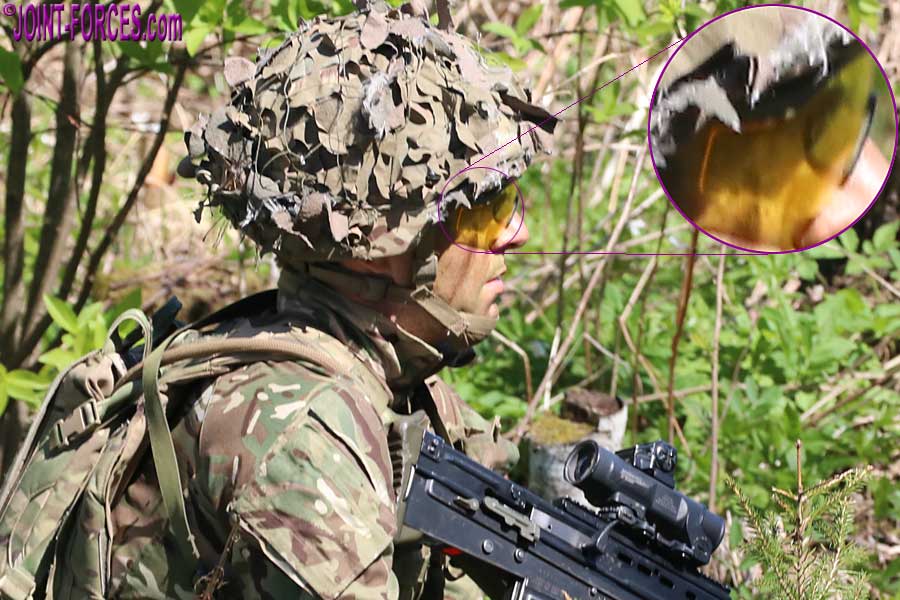
Behind The Curve: One thing we noted back in 2009 was that the British were lagging well behind their allies in the use of ballistic protection eyewear on a daily basis. Over the previous couple of years the Americans, and to a lesser extent many of other allies, had been insisting that their personnel wear protective spectacles or goggles while on duty in the same way that a factory worker automatically dons safety glasses before venturing onto the shopfloor. In Afghanistan and Iraq this was actually second nature to most troops, as the bright sunlight made the wearing of sunglasses a necessity, so the protective eyewear that every soldier was issued prior to deployment tended to get worn out of simple convenience. The wind and dust suffered if travelling in open-topped vehicles, particularly Jackal, also encourages the wearing of goggles, so combat troops in the ‘Sandpit’ or ‘Green Zone’ didn’t really need to be told to protect their eyes from the elements. However, away from the frontline and in less exotic locations it was not unusual to see British troops at work in high risk activities with no eye protection whatsoever.
The key to protecting the eyes is the polycarbonate lens or shield. This lightweight but high performance solution can be fielded in the form of conventional spectacles, full vision goggles or simple visors worn as ‘wraparound’ sunglasses. Each design has its specific advantages and disadvantages, hence the reason for both goggles and spectacles being issued to many frontline troops, but on the whole each provides very similar protection; though the ‘wraparound’ rimless visor style does not prevent ingress of airborne dust and grit so, although often favoured by troops for its looks, this is seen very much as the least protective option.
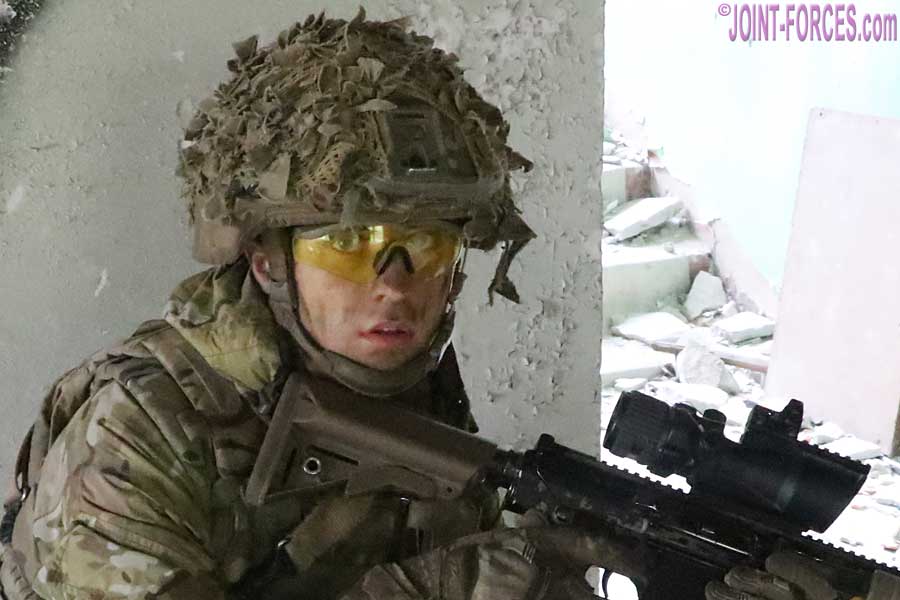
From the start of Operation IRAQI FREEDOM in March 2003 through to the end of December 2004, statistics from the US Military Office of the Surgeon General’s patient tracking database on troops evacuated for eye-related problems from both Iraq and Afghanistan were collated and investigated. In total 368 patients, representing nearly a quarter of all evacuations, suffered from eye-related complaints alone or in combination with other bodily injuries, but incredibly 258 of the total 1,635 evacuees, almost one in six patients, were evacuated SOLELY because of battlefield eye injuries.
Around the world there are countless manufacturers of safety spectacles and goggles, many with polycarbonate lenses, but few of these are suitable for battlefield use due to the much higher velocities of ballistic fragments compared to say weld chippings or flying swarf. For a time the American National Standards Institute (ANSI) stipulation for protective eyewear was one of the benchmarks used, yet that only specified that lenses must resist a one gram pellet fired at a velocity of 150 feet per second. According to Canadian manufacturers Revision, in an independent test by the Munitions Experimental Test Centre their popular Sawfly lens successfully resisted the one gram projectile at 905fps, or six times the prescribed ANSI velocity. To put this in comparison, the muzzle velocity of a Browning Hi-Power round is 1150fps.
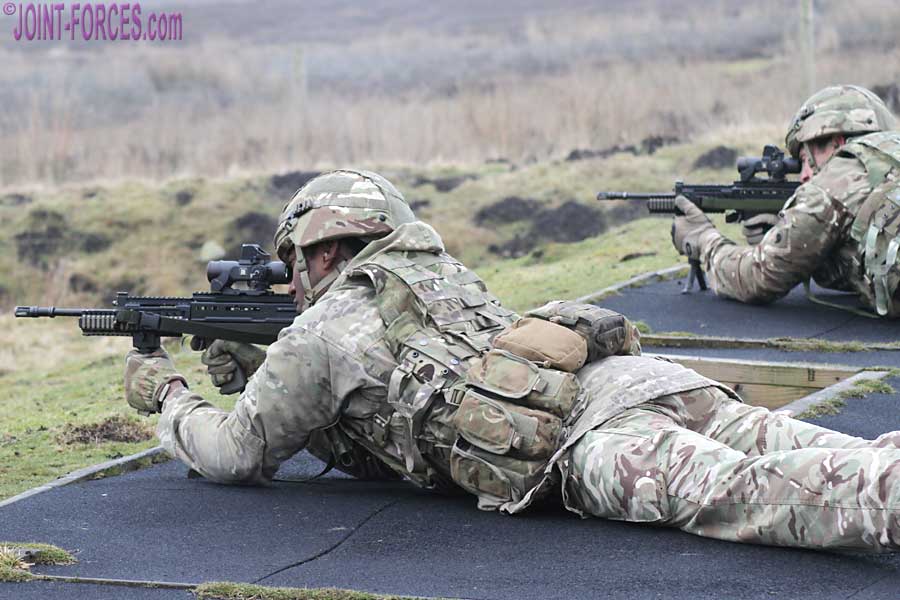
Sexy Not Safety? Functionality and to some extent fashion usually plays a major part in a combat soldier’s willingness to wear protective equipment. If a pair of issue spectacles does not fit properly, or if its appearance is too utilitarian or unfashionable, chances are he will find excuses not to wear. Sometimes the ‘gucci’ or ‘ally’, in soldierspeak, and comfort factors are neglected by those in military procurement, who see saving on unit costs by buying purely functional or one-size-fits-all products as the bottom line. This can be false economy if the soldier either does not wear the safety equipment, or opts to wear something more fashionable but offering less protection. In other words, to coin a phrase, if he opts for ‘sexy not safety’.
These days most manufacturers catering for the defence sector who also make their products widely available for private purchase both understand the ‘street cred’ factor and acknowledge that the soldier of the 21st Century is also usually more intelligent and more literate than his father’s or grandfather’s mostly conscript generations were, plus they have higher expectations than they did. As a result fashionable and functional eyewear offering, or even exceeding, the basic required specification is not too hard to find and will not break the bank. Anything that makes the soldier want to wear protection simply has to be a good thing if it cuts down the eye injury rate.
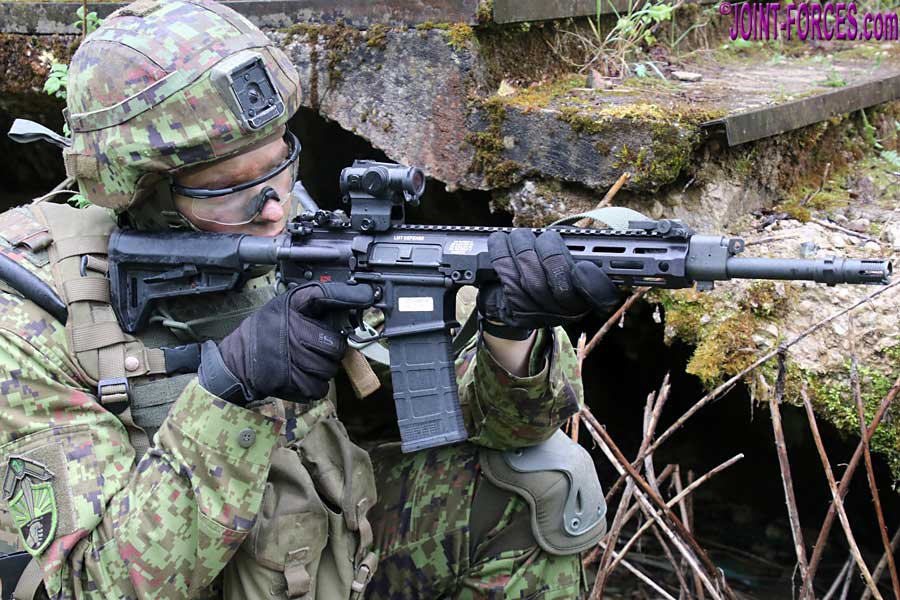
~


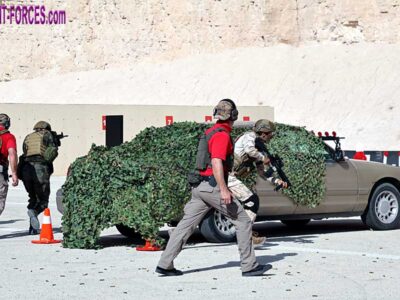
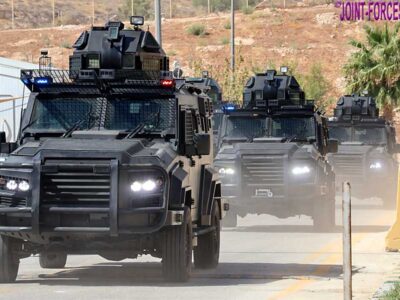













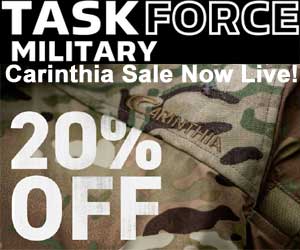


Pingback : JEFF FALCON Combat Eye Protection From Korea | Joint Forces News
Pingback : Revision SlingShot Browless Ballistic Sunglasses | Joint Forces News